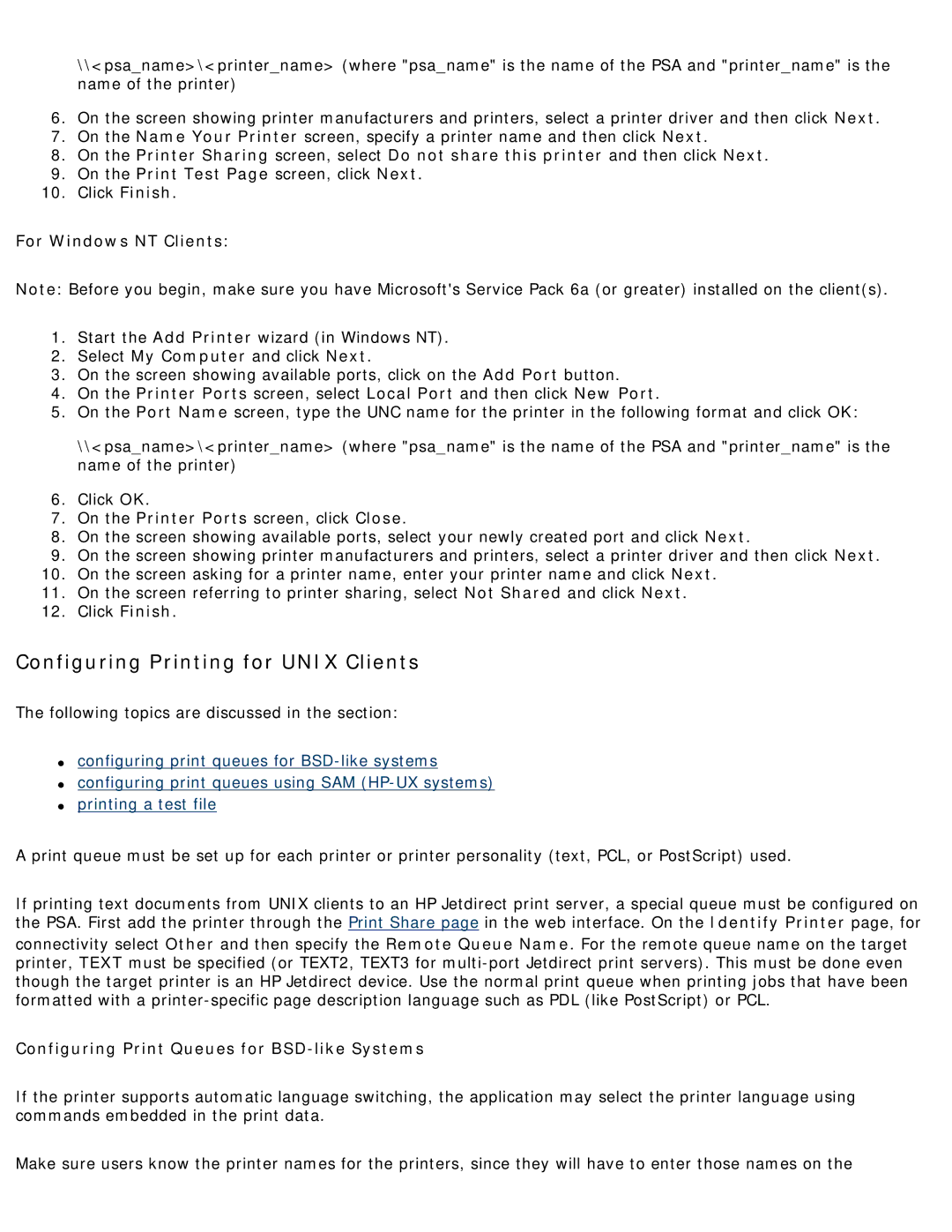\\<psa_name>\<printer_name> (where "psa_name" is the name of the PSA and "printer_name" is the name of the printer)
6.On the screen showing printer manufacturers and printers, select a printer driver and then click Next.
7.On the Name Your Printer screen, specify a printer name and then click Next.
8.On the Printer Sharing screen, select Do not share this printer and then click Next.
9.On the Print Test Page screen, click Next.
10.Click Finish.
For Windows NT Clients:
Note: Before you begin, make sure you have Microsoft's Service Pack 6a (or greater) installed on the client(s).
1.Start the Add Printer wizard (in Windows NT).
2.Select My Computer and click Next.
3.On the screen showing available ports, click on the Add Port button.
4.On the Printer Ports screen, select Local Port and then click New Port.
5.On the Port Name screen, type the UNC name for the printer in the following format and click OK:
\\<psa_name>\<printer_name> (where "psa_name" is the name of the PSA and "printer_name" is the name of the printer)
6.Click OK.
7.On the Printer Ports screen, click Close.
8.On the screen showing available ports, select your newly created port and click Next.
9.On the screen showing printer manufacturers and printers, select a printer driver and then click Next.
10.On the screen asking for a printer name, enter your printer name and click Next.
11.On the screen referring to printer sharing, select Not Shared and click Next.
12.Click Finish.
Configuring Printing for UNIX Clients
The following topics are discussed in the section:
●configuring print queues for
●configuring print queues using SAM
●printing a test file
A print queue must be set up for each printer or printer personality (text, PCL, or PostScript) used.
If printing text documents from UNIX clients to an HP Jetdirect print server, a special queue must be configured on the PSA. First add the printer through the Print Share page in the web interface. On the Identify Printer page, for
connectivity select Other and then specify the Remote Queue Name. For the remote queue name on the target printer, TEXT must be specified (or TEXT2, TEXT3 for
Configuring Print Queues for BSD-like Systems
If the printer supports automatic language switching, the application may select the printer language using commands embedded in the print data.
Make sure users know the printer names for the printers, since they will have to enter those names on the
